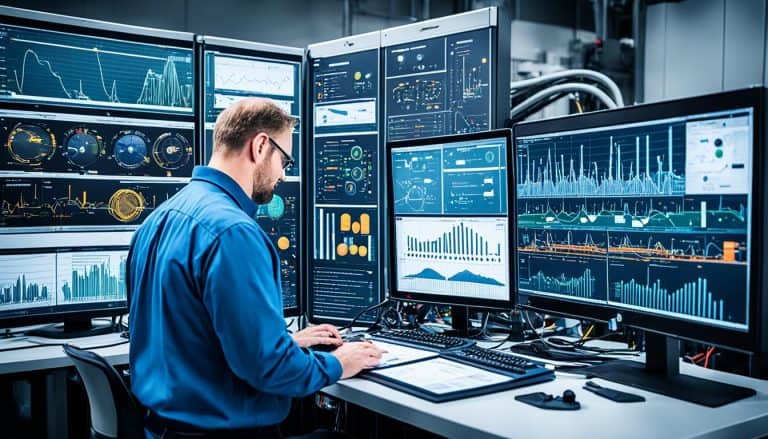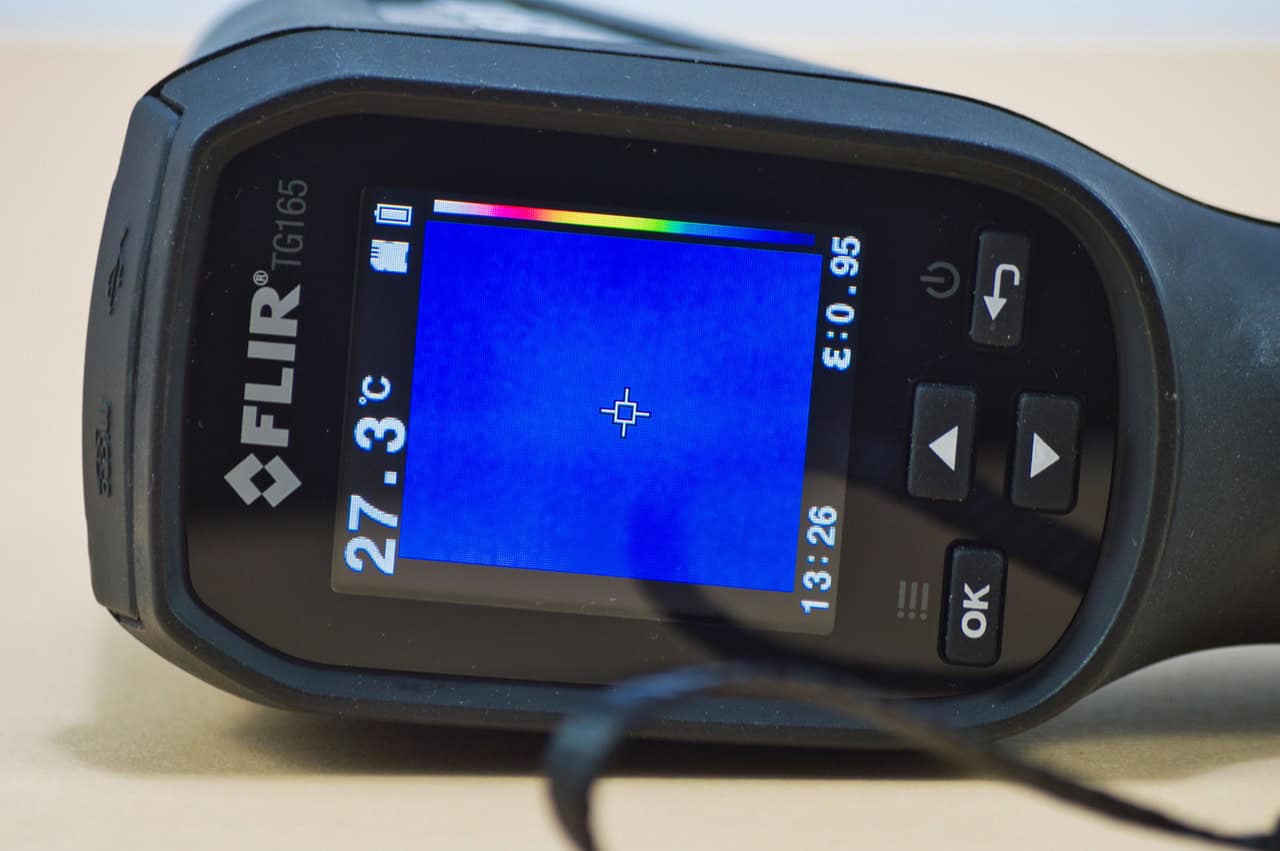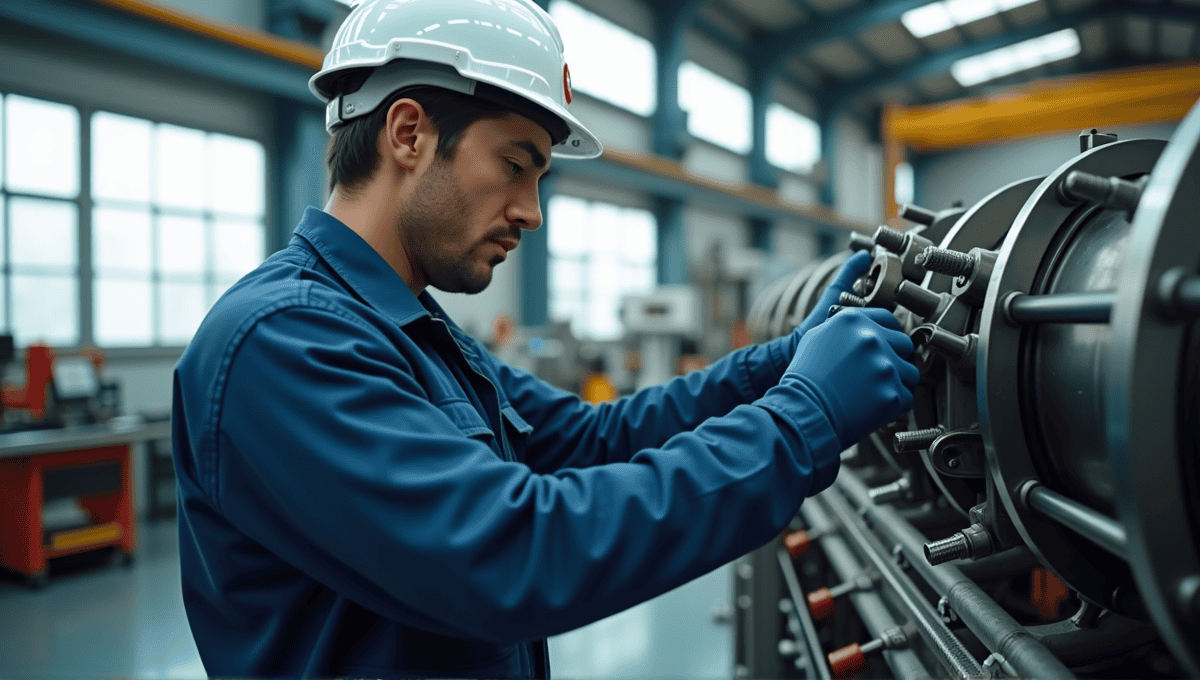Can you hear the whispers of your machines? I’m not talking about sounds we can hear. I mean the subtle vibrations that tell us a lot about their health. Vibration analysis is like a stethoscope for industrial equipment, letting us listen to the heartbeat of our machines.
In my years working with predictive maintenance, I’ve seen how vibration analysis push performance to new heights. It’s not just about fixing machines when they break. It’s about understanding their issues and predicting their needs before problems start.
Let’s explore the world of vibration analysis and see how it’s changing machine health monitoring. You’ll understand why this technique is essential in industries everywhere.
Introduction to Vibration Analysis
Vibration analysis is a key method to check how well machinery is working. It helps spot problems before they cause big issues. This is crucial for keeping machines running smoothly in many industries.
This method captures data from sensors on equipment. These sensors notice small changes in how a machine vibrates. These changes can mean wear, misalignment, or other problems. By looking at this data, I can fix issues early and avoid big breakdowns.
Vibration analysis is great because it doesn’t need to stop machines or take them apart. This means I can keep production going while still checking on equipment health. It’s a smart way to keep things running smoothly.
Using vibration analysis in maintenance has many benefits:
- Reduced downtime
- Lower maintenance costs
- Improved safety
- Extended equipment life
By using vibration analysis, companies can move from fixing problems after they happen to preventing them before they start. This change saves money and makes operations more reliable and efficient.
Key Components of a Vibration Analysis System
A strong vibration analysis system has three main parts: vibration sensors, data acquisition systems, and analysis software. These work together to show us how well machines are doing.
Vibration sensors are the core of the system. They include accelerometers and velocity sensors. These tools catch the smallest movements in machines, changing them into electrical signals.
Data acquisition systems connect sensors to computers. They take the signals from sensors and turn them into digital data. Some systems can handle many sensors at once, giving us a full view of our machines.
Analysis software is where the magic is. It takes raw data and makes it useful. Modern software can find patterns, predict failures, and suggest when to do maintenance. It’s easy to use, so anyone can understand complex vibration data.
- Vibration sensors detect machine movements
- Data acquisition systems collect and process sensor signals
- Analysis software interprets data and provides insights
Together, these parts make a powerful tool for checking and keeping industrial equipment running well. The combination of vibration sensors, data acquisition systems, and analysis software helps us spot problems early, saving us money.
Applications of Vibration Analysis in Various Industries
Vibration analysis is key in many industries. In industrial settings, it keeps an eye on rotating parts like pumps, motors, and gearboxes. By catching odd vibrations early, teams can stop big problems and make machines last longer.
The power sector uses vibration analysis a lot to keep turbines and generators running smoothly. I’ve seen how it helps avoid sudden stops, which could mean big power losses.
In aerospace, it’s all about keeping planes safe and flying well. By checking engines, propellers, and other important parts, it finds issues before they turn into big problems in the air.
| Industry | Key Applications | Benefits |
|---|---|---|
| Industrial Machinery | Monitoring rotating equipment | Prevents breakdowns, extends machine life |
| Power Generation | Turbine and generator maintenance | Ensures optimal performance, avoids shutdowns |
| Aerospace | Aircraft engine and component checks | Enhances safety, improves performance |
Benefits of Implementing Vibration Analysis in Predictive Maintenance
Vibration analysis changes how companies handle maintenance. It helps spot problems early, cutting repair costs and avoiding sudden breakdowns. This way, companies save a lot of money.
Preventing downtime is another big plus. By catching issues before they start, production stays on track. This means companies don’t lose time and can make more products.
Looking after your equipment’s health is key. Regular checks mean you can fix things before they break. It’s like keeping your machines in top shape for a long time.
| Benefit | Impact |
|---|---|
| Cost Reduction | Up to 25% decrease in maintenance expenses |
| Downtime Prevention | Reduces unplanned downtime by 70% |
| Equipment Lifespan | Increases by 20-40% |
Its generally a smart investment. Companies often see their money back in months, not years. It’s a big win for maintenance teams wanting to work smarter and save money without losing quality.
Common Challenges and How to Overcome Them
Vibration analysis can be tricky. I’ve faced many hurdles in my work. Data interpretation is often complex. Sensor placement can make or break results. Environmental factors throw curveballs too. Let’s explore these challenges and find solutions.
Data interpretation stumps many analysts. Raw vibration data can be overwhelming. I use specialized software to break it down. This helps me spot patterns and anomalies faster. Training is key. I keep up with new techniques through workshops and online courses.
Sensor placement is crucial for accurate readings. I always map out machine hotspots before installation. This ensures I capture the most relevant data. Sometimes, I use multiple sensors to get a complete picture. It’s worth the extra effort for better insights.
Environmental factors can skew results. Temperature changes, humidity, and nearby equipment all play a role. I account for these in my analysis. Baseline measurements help me separate true machine issues from environmental noise.
| Challenge | Solution |
|---|---|
| Complex data interpretation | Use specialized software, ongoing training |
| Optimal sensor placement | Map machine hotspots, use multiple sensors |
| Environmental interference | Account for factors, take baseline measurements |
By addressing these challenges head-on, I’ve improved my vibration analysis results. It’s a continuous learning process, but the payoff in machine health and reliability is worth it.
Future Trends and Innovations
I’m thrilled about the future of vibration analysis. It’s evolving quickly, thanks to new technology. Artificial intelligence is a big part of this change. It helps us find machine problems faster and more accurately than before.
IoT integration is also changing the game. It allows us to collect data from machines everywhere at once. This means we can monitor equipment health in real-time, no matter where we are. It’s like having a machine doctor that’s always ready to help.
Wireless sensors are making vibration analysis simpler and more affordable. We don’t need to deal with cables anymore. These sensors can reach places we couldn’t before. They give us a better understanding of how our machines are performing.
I think these trends will make vibration analysis more powerful and easy to use. Soon, even small companies will be able to use it to keep their machines running well. It’s an exciting time for us in this field!






